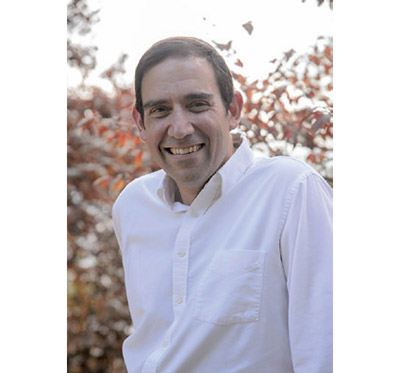
The book of Tanach is defined by “causality.” Mitzvah performance yields a life of welfare and blessing, while religiously errant behavior is punishable by removal of Divine presence and relocation from the Land of Israel—galut. When this causality is absent and the innocent suffer, moral questions arise. Avraham challenges the collective punishment of Sedom by asking how the “Cosmic Judge” can allow injustice. Iyov—a righteous person—is troubled by this incongruence between his innocence and the misery he suffers. Thirty-eight chapters unfold and his question remains a mystery; we are not always able to decipher the will of Hakadosh Baruch Hu, and we inhabit a world that sometimes awards evil and punishes the virtuous.
The students of Rabbi Shimon bar Yochai pondered this question when studying Megillat Esther (as recounted in Masechet Megilla (12a): Why was an entire population subjected to genocidal potential—a scenario that was only averted by the rallying prayers and last-minute teshuva incited by Esther? This generation seemed blameless and unworthy of this threat. Intriguingly, Rabbi Shimon didn’t respond, inviting his students to suggest their own reason. They asserted that the Jews were held accountable for participating in the 180-day-long revelry of Achashverosh. This is a very provocative suggestion! Indeed, the event wasn’t a moral celebration, and certainly Jewish attendance should have been discouraged. However, the penalty—the possibility of Jewish extinction—doesn’t appear to “fit” this crime of material indulgence. The penalty seems extremely disproportionate to the crime!
Understanding the severity of this crime requires a broader historical view of Megillat Esther. Chazal assert that this story occurred after the Jews had begun their return to Israel (chronicled in the first few chapters of Ezra). Koresh, the Persian monarch (assigned by Chazal as the grandfather of Achashverosh) had sanctioned this return and had even sponsored the initial construction of the Mikdash. Zerubavel, the Persian-appointed governor of Judah launches a process that was slated to conclude with a full return to Israel. However, despite the opportunity and the optimism of the opening chapters of Sefer Ezra, the process grinds to a screeching halt as local enemies in Israel, opposed to Jewish expansion and pseudo-sovereignty in the Jewish homeland, agitate against the resettlement. These opponents of Jewish relocation hurriedly write letters of animosity (literally sitna, see Ezra 4:6), convincing Koresh to rescind his earlier approval of Jewish return. Eighteen years later, Ezra launches the second stage of the geula and the process culminates. During this eighteen-year hiatus the Purim story unfolds and the Jews in Shushan face the threat of Haman.
These ensuing 18 years weren’t only defined by stagnation of the rebuilding process; the attempts to reconstitute our country were met with violent opposition. The Jews were accused of rebelling against the Persian authority; if their insurrection was allowed it would trigger copycat rebellions across the Persian empire, and such mayhem couldn’t be tolerated (this is the very claim Memuchan lodges in the first chapter of Megillat Esther to convince Achashverosh to severely punish Vashti). In response to these antagonistic letters, the restoration process is halted amid hostility and political opposition.
Years later, this political hostility erupts into actual warfare as Nechemia (who completed Ezra’s efforts) struggles to fend off waves of attackers. Compounding the challenge facing Nechemia was the terrible poverty the nascent community in Israel faced and the dispirited morale of the fledgling population struggling to rebuild Jewish history.
Amidst this turbulence of factors the story of Shushan occurs. Jews had already returned to Jerusalem, laid the foundations of the Mikdash and were struggling with financial limitations and political and military hostilities. While this was occurring in Jerusalem, what occupied the Jews of Shushan…
The menu of the 180-day meal—all you can eat! They were preoccupied with calculating how many vintage wines could be ordered from the open bar. Whether to recline on alabaster beds of marble couches. What type of plates and cutlery could be used to create maximum opulence and perhaps even hideous exhibitionism. It is one thing to participate in our local cultures and to deeply integrate into their socio-economic fabric. It is quite another experience to live so indulgently and excessively while Jews are sacrificing their lives in Israel to pioneer Jewish history. For this historical insensitivity, the Jews of Shushan are punished and must face the genocidal campaign of Haman.
In the modern era, Western Jews have been blessed with unmatched affluence and prosperity, both personally and communally. This phenomenon is so unprecedented that we lack a mesorah for living with wealth in a manner that reflects moral sensitivity and codes of tzniut. Our tradition rarely dealt with these challenges and, baruch Hashem, we now face uncharted territory. However, one issue should be absolutely obvious to us: as millions of Jews are engaged in the struggle to rebuild the modern State of Israel, millions of others who haven’t yet returned should try to calibrate their experiences in a manner that is “in sync” with the struggles in our common homeland in Israel. To be immersed in Persian opulence while Jews are fending off enemies in Israel is morally troubling and historically insensitive. Each Jew must confront this challenge—not to be caught indulging in Achashverosh’s parties while others are struggling to lay foundations of the future. For each person, the challenge of avoiding the Achashverosh syndrome is different. Perhaps during periods of acute struggle in Israel Jews across the world should more significantly temper their personal indulgence to avoid Achashverosh syndrome. Though the expression may differ from person to person, the common goal should be similar: living lives that are consonant with local cultures but are attuned to the historical struggle we all share.
By Moshe Taragin
Rabbi Moshe Taragin is a rebbe at Yeshivat Har Etzion, located in Gush Etzion, where he resides.











